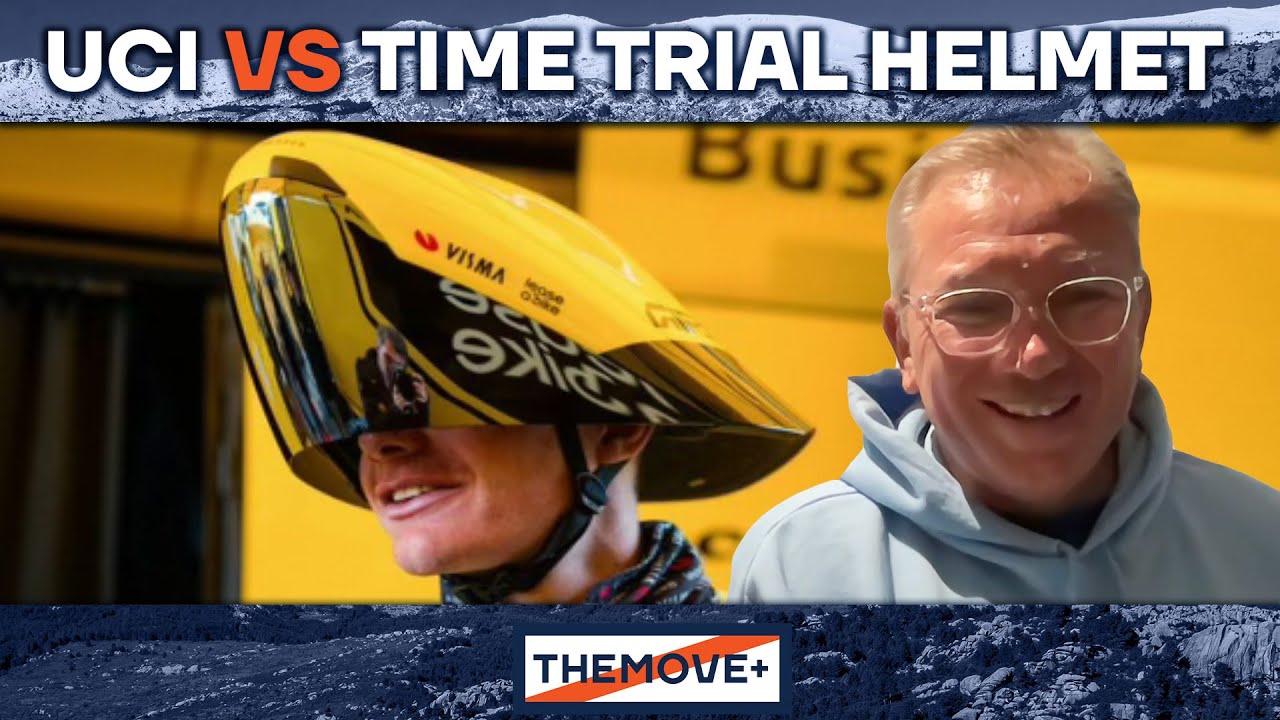Why is the UCI Fighting Time Trial Helmet Innovation? | THEMOVE+ | WEDŪ
Source: WEDŪ Youtube Channel: Why is the UCI Fighting Time Trial Helmet Innovation? | THEMOVE+
Video Why is the UCI Fighting Time Trial Helmet Innovation? | THEMOVE+ with WEDŪ
Video Why is the UCI Fighting Time Trial Helmet Innovation? | THEMOVE+ with WEDŪ YouTube Channel.
WEDŪ Youtube Channel featuring Lance Armstrong, George Hincapie, Johan Bruyneel and Spencer Martin.
In a recent episode of Beyond the Peloton Newsletter, Johan Bruyneel and Spencer Martin delved into the UCI’s controversial decision to ban a key feature of the Specialized time trial helmet’s aerodynamic design. This move by the UCI has sparked a debate within the cycling community, with concerns about the impact on sponsor investment and innovation in helmet design. Johan and Spencer explore the potential repercussions of this decision and ponder what the future landscape of aero helmets will look like in the wake of these changes.
Why is the UCI Fighting Time Trial Helmet Innovation? | THEMOVE+
WEDŪ: The Controversy Surrounding Time Trial Helmets
Welcome to the discussion on the latest controversy in the cycling world regarding time trial helmets. Spencer Martin and Johan Bernal delve into the recent developments surrounding the approval and subsequent banning of certain time trial helmets by the UCI. The discussion revolves around the new helmets unveiled at the Paris-Nice and the response from the UCI, particularly focusing on the specialized headsock, the Jumbo-Visma Liza Bike helmet, and the Rudy Project Windream helmet.
Unveiling Alien-Like Helmets:
The uproar began when the Jumbo-Visma team introduced a new, unconventional helmet during the Paris-Nice time trial. The helmet, often compared to an alien head or Darth Vader’s helmet, raised eyebrows for its unique design. Despite its visually striking appearance, the helmet passed all safety protocols and was approved by the UCI at the end of 2023. The design was optimized for specific riders, promising a time gain of five to ten seconds per ten kilometers. This innovation was the result of months of research and development aimed at gaining a competitive edge in time trials.
UCI’s Response and Ban:
However, shortly after the Paris-Nice time trial, social media platforms buzzed with criticism of the new helmet’s aesthetics. Influential voices in the cycling community, like Daniel Lloyd, expressed their dislike for the helmet, labeling it as “ugly.” Subsequently, the UCI released a statement announcing a review of the regulations governing time trial helmets. The specialized headsock component of the American company’s TT5 helmet was deemed a non-essential component, leading to its ban. The UCI’s decision stirred controversy as it contradicted their previous approval and raised questions about the transparency and consistency of their regulatory processes.
Challenges Faced by Helmet Manufacturers:
The ban not only affects Jumbo-Visma’s new helmet but also puts other industry players like Jiro and Rudy Project under scrutiny. The uncertainty surrounding the regulations governing time trial helmets has left manufacturers and teams in a difficult position. Major financial investments made by companies in developing specialized equipment for teams might go to waste if the UCI continues to change its rules abruptly. The partnership between helmet manufacturers and teams is crucial for innovation and advancement in cycling technology, making it imperative for regulatory bodies to provide clear guidelines and maintain consistency in their decisions.
Complexities of Safety and Aesthetics:
The debate over time trial helmets goes beyond safety and extends into the realm of aesthetics and marketing. While safety is paramount, the visual appeal of helmets plays a significant role in brand recognition and marketability. The balance between functionality, performance, and aesthetics is crucial for manufacturers and teams striving to stay competitive in the cycling industry. The UCI’s role in regulating equipment and ensuring fair competition has a direct impact on the sport’s evolution and the influence of technological advancements on performance.
Implications for the Cycling Community:
The controversy surrounding time trial helmets highlights the challenges faced by both manufacturers and regulatory bodies in balancing safety standards with innovation and aesthetics. The ever-changing landscape of cycling equipment necessitates a collaborative approach between stakeholders to ensure the sport’s growth and sustainability. The UCI’s decisions regarding equipment regulations have far-reaching implications for teams, manufacturers, and riders, underscoring the need for transparent and consistent guidelines in governing technological advancements in cycling.
Looking Ahead:
As the discussion on time trial helmets continues, it is essential for all parties involved to engage in open dialogue and constructive decision-making processes. The evolution of cycling equipment should be driven by a commitment to safety, performance, and creativity, with regulatory bodies playing a supportive role in fostering innovation. The future of time trial helmets and other cycling equipment rests on a delicate balance between tradition, technological progress, and the evolving demands of the sport. As cycling enthusiasts and stakeholders, we must navigate these challenges collectively to ensure a sustainable and vibrant future for the sport we love.
The opinions expressed in this space are the sole responsibility of the YouTube Channel WEDŪ and do not necessarily represent the views of CicloNews.










